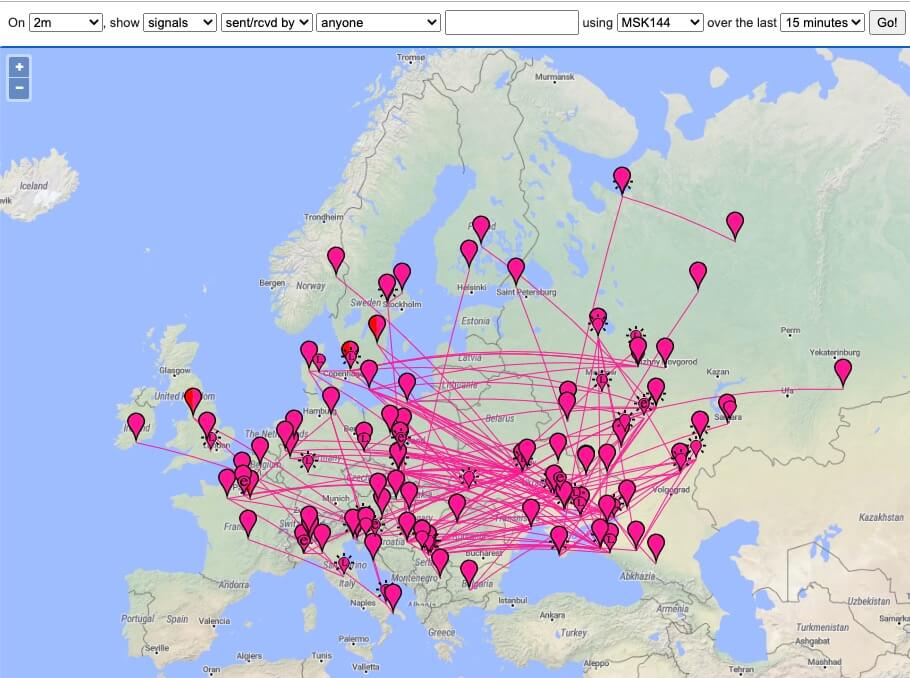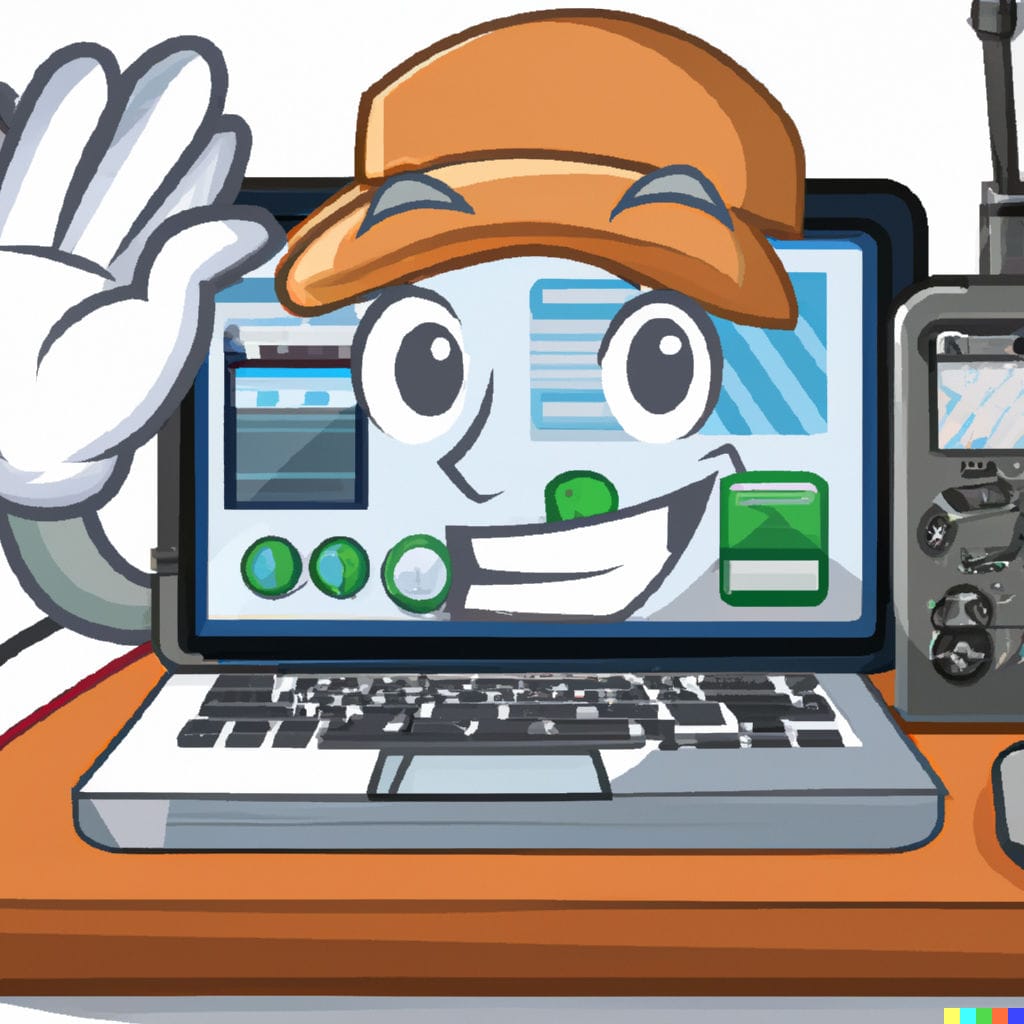Ham Radio Software
Browsing CategoryHam Radio Software
Amateur radio has been around for over a century, and over time, it has evolved to become a more advanced and sophisticated technology. Today, amateur radio enthusiasts have access to a wide range of ham radio software applications that can enhance their experience, allowing them to communicate with other operators from around the world, experiment with different modes, and more.
In this category of my blog, I will explore some of the best software for amateur radio and how they can help enhance your experience. Whether you’re a seasoned operator or just starting out, there’s a software application out there that can help you get more out of your hobby.
The Importance of Technology in Amateur Radio
Amateur radio has always been a technology-driven hobby, with operators using various tools and equipment to communicate with each other. As technology has advanced, so has the hobby, and today, many amateur radio enthusiasts are using software to enhance their experience.
From digital modes like FT8 and PSK31 to software-defined radios (SDR) and logging programs, there’s a wide range of software available for amateur radio enthusiasts. These tools can help you communicate more efficiently, experiment with different modes, log your contacts more easily, and more.
How HamRadio Software Can Enhance Your Experience
Using software in amateur radio can help you get more out of your hobby in many ways. For example, it can allow you to:
- Communicate more efficiently and effectively with other operators
- Experiment with different modes and techniques
- Log your contacts more easily and keep track of your progress
- Analyze your signals and improve your technique
- Access real-time data and information about the conditions of the ionosphere and other relevant factors
Overall, using software in amateur radio can help you get the most out of your hobby, whether you’re interested in casual conversations or more advanced experimentation. In the following sections, we will explore some of the best software applications available for amateur radio and how they can help enhance your experience.
Types of Software for Amateur Radio
Antenna Modeling Software
Antenna modeling software is a type of software application that allows amateur radio enthusiasts to design and simulate different types of antennas. These software tools use mathematical models to predict how a given antenna will perform in different conditions, allowing operators to optimize their antenna designs for maximum performance.
One of the key features of antenna modeling software is the ability to visualize the antenna’s radiation pattern, which shows how the antenna radiates energy in different directions. This can be useful for optimizing the antenna’s performance, such as minimizing interference or increasing gain.
Antenna modeling software works by inputting various parameters, such as the antenna’s physical dimensions, the frequency range of operation, and the environment in which the antenna will be used. The software then uses complex mathematical models to predict how the antenna will perform in different conditions.
Pros of using antenna modeling software include the ability to optimize antenna performance, experiment with different antenna designs, and save time and money by simulating antenna designs before building them. However, antenna modeling software can be complex and requires a deep understanding of antenna theory and mathematics.
Some popular antenna modeling software applications include EZNEC, 4NEC2, and MMANA-GAL. These tools offer a wide range of features and capabilities, including 3D visualization of the antenna, the ability to model different types of antennas, and the ability to simulate the antenna’s performance in different environments.
Overall, antenna modeling software can be a valuable tool for amateur radio enthusiasts who are looking to optimize their antenna designs and improve their overall performance. By simulating different antenna designs and testing them in different conditions, operators can improve their chances of making successful contacts and advancing their skills in the hobby.
Digital Modes
Digital modes are a type of transmission mode in which the audio signal is modulated by a digital waveform, rather than an analog waveform. Digital modes can offer several benefits over traditional analog modes, including increased resistance to noise and interference, improved signal quality, and the ability to transmit data and images in addition to voice communications.
Digital modes work by encoding audio signals into digital information, which can then be transmitted over the airwaves using a variety of modulation techniques. At the receiving end, the digital information is decoded back into an audio signal, which can be played through a speaker or headphones.
One of the main benefits of digital modes is their ability to transmit data and images in addition to voice communications. This can be useful for sending text messages, images, or other data over long distances, without the need for a dedicated data connection.
However, digital modes also have some drawbacks, such as the need for specialized equipment and software, and the potential for more complex setup and configuration.
Popular digital mode software applications include WSJT-X and Fldigi. These tools offer a wide range of features and capabilities, such as the ability to encode and decode digital signals, the ability to filter out noise and interference, and the ability to automate the transmission and reception of digital signals.
To use these digital mode software applications, operators will typically need a computer with a sound card and an interface that connects the computer to the radio. The software will then use the sound card to encode and decode digital signals, and the interface will transmit and receive these signals over the airwaves.
Software-Defined Radios (SDR)
Software-defined radios (SDRs) are a type of radio that uses software to control the radio’s functions. This allows for greater flexibility and control over the radio’s operation, as well as the ability to receive and transmit signals over a wider range of frequencies.
One of the biggest advantages of using an SDR is the ability to visualize signals in real-time, which can be useful for identifying interference and adjusting your antenna. However, SDRs can be more complex and expensive than traditional radios.
There are several popular software applications for SDRs, including SDR#, HDSDR, and GNU Radio.
Logging Programs
Logging programs are software applications that help you keep track of your contacts, including the date, time, frequency, and mode of each contact. This can be useful for keeping track of your progress and for verifying contacts for awards and other achievements.
Some of the most popular logging programs include DXKeeper, Logger32, and N1MM Logger. These programs can also be used to create QSL cards and to generate statistics and reports about your contacts.
Pros of using logging programs include easier record-keeping and the ability to analyze your contacts and progress over time. However, some operators prefer to keep track of their contacts manually.
Amateur radio software can greatly enhance your experience as a radio operator by providing additional features, modes, and convenience. However, there are some best practices to follow when using software to ensure a smooth and effective experience.
Here are some tips for using amateur radio software:
Before downloading and installing any software, it’s important to research and choose a program that is reliable, well-supported, and fits your needs. Look for reviews and feedback from other radio operators to ensure the software is reputable and user-friendly.
Keep software updated:
Software updates can improve performance, add new features, and fix bugs. Regularly check for updates and install them to ensure you are using the latest version of the software.
Backup software settings:
Backup the settings and configurations of the software to protect against accidental changes or computer crashes. This will save time and prevent the loss of important settings.
Read the manual:
Take time to read the manual and learn the software’s features, modes, and capabilities. This will help you make the most of the software and avoid mistakes.
Test software in a safe environment:
Before using the software during an important radio operation, test it in a safe environment to familiarize yourself with its features and modes. This will help you identify any potential issues and ensure the software is working properly.
5 common mistakes to avoid when using amateur radio software include:
- Not testing the software before using it in a critical situation.
- Failing to backup software settings, leading to lost configurations and preferences.
- Neglecting to update software, leading to security vulnerabilities and missed features.
- Overloading your computer with too many software programs, leading to slow performance and crashes.
- Not reading the manual and missing out on important features and modes.
Finally, it’s important to try out different software applications to enhance your experience as a radio operator. There are many software programs available that can provide new modes, digital signal processing, and other features that can greatly enhance your radio experience. Don’t be afraid to experiment and try out new programs to find the best fit for your needs.


